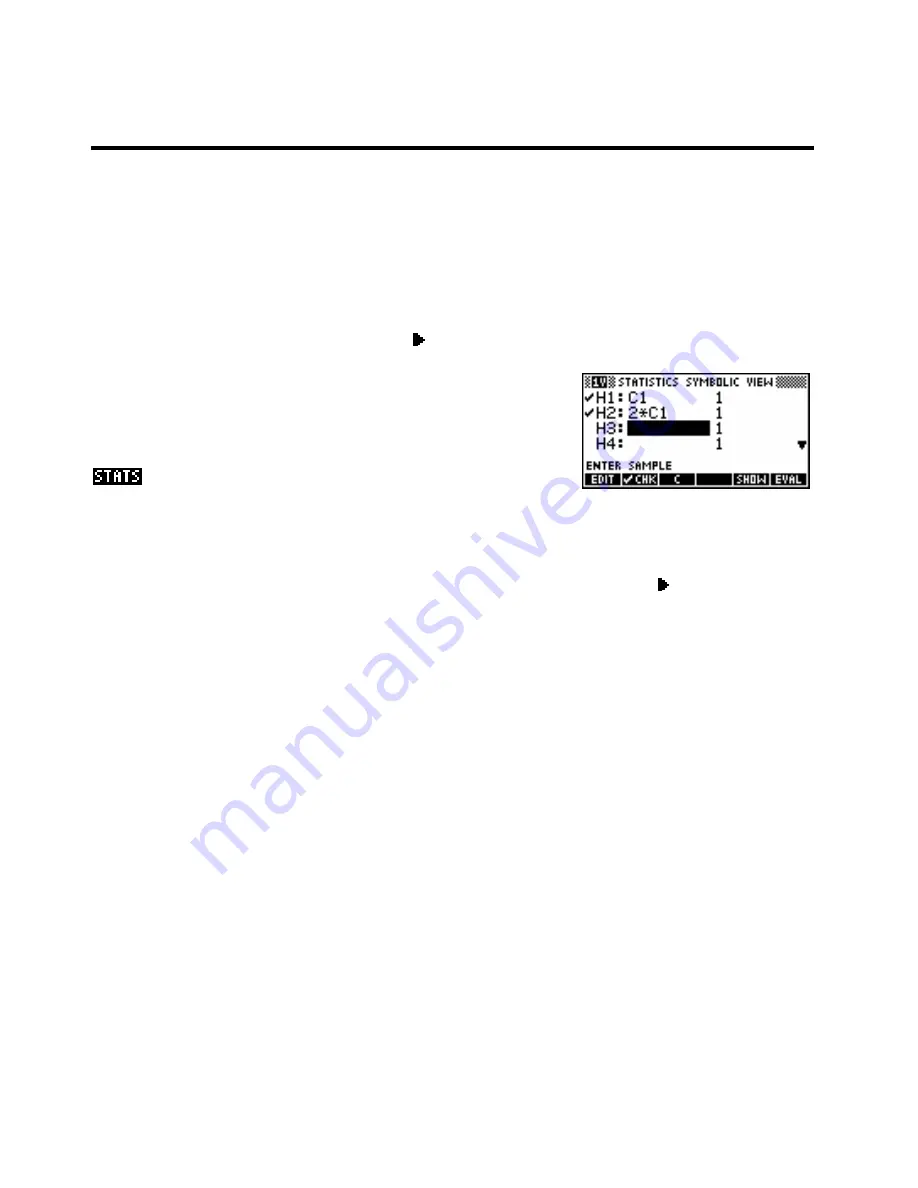
19
T
T
H
H
E
E
E
E
X
X
P
P
E
E
R
R
T
T
:
:
S
S
I
I
M
M
U
U
L
L
A
A
T
T
I
I
O
O
N
N
S
S
&
&
R
R
A
A
N
N
D
D
O
O
M
M
N
N
U
U
M
M
B
B
E
E
R
R
S
S
New columns as functions of old
You have already seen the use of one trick when we created a new column
C1
by storing
2*C1
into
C2
using
the
HOME
view. This can be used to create new columns as functions of any number of others. For example,
a set of data that you suspect is exponential could be ‘straightened’ by storing
LN(column)
into a fresh
C3
.
column. Changes of scale and origin can be investigated in this way by storing (say)
-2*C1 + 3
into
C2
.
You can even combine columns such as
C1 + C2
If you don’t particularly need to
see
the data as a fresh column, you can
use the
SYMB
view to accomplish the same thing in a simpler way. For
example, the
SYMB
view snapshot on the right would accomplish the
same thing as storing
2*C1
into
C2
. A histogram of
H2
would look the
same as the one we produced earlier using the
HOME
view, and the
command would give exactly the same results. The advantage
of this is that it takes much less memory if both columns need not be stored.
For the teacher this can be a handy way to create sets of data that conform to particular models. For
0.03
x
example, if you would like a set of data that conforms to a model of
y
ˆ
=
2.5
e
then simply enter any
values randomly into
C1
and then, in
HOME
, perform the calculation
2.5*e^(0.03C1) C2
. Of course, the
result will be a set of y values which exactly match the model and this is not desirable. The teacher should
now go through them and introduce some random error so that they are no longer a perfect fit.
Simulating Dice
The most common experiments in probability involve the rolling of dice. This can be simulated in the Statistics
aplet using the
MATH
menu function
MAKELIST
. (For more detail see page 190)
The syntax is:
MAKELIST( expression, variable name, start, end, increment )
where
expression
is the mathematical rule used to
generate the numbers.
variable name
is the letter (X, Y etc.) that is to be
used
in
the
expression
(any
other
letters will be taken as constants).
s
tart
is the first value
variable name
is to take.
e
nd
is the upper bound for
variable name
.
and
increment
is the amount that variable name
should be incremented by in each
iteration.
For example:
MAKELIST(X2,X,1,10,2)
would produce { 1, 9, 25, 49, 81 } as
X
went from 1 to 3 to 5 to …
120






























